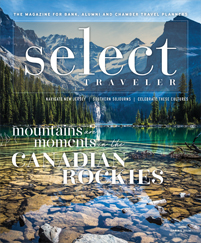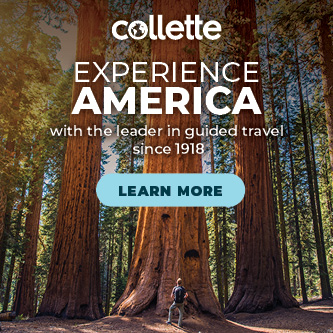Though many adults are more than glad their school days are behind them, for some travelers, learning is the best part of taking a trip.
For bookworms, trivia buffs and other lifelong learners, vacation and education go hand in hand, and adult educational travel has grown exponentially since the concept was introduced in the 1970s. Though most traditional tours offer a certain amount of guide commentary on the history and culture of the places being visited, education-focused trips dial the intensity up a notch with learning and lectures provided by academics and other experts with deep knowledge of a destination.
If your organization has an educational mandate, or if you have a lot of intellectually curious travelers among your membership, adding a learning-focused trip to your travel schedule may prove a delightful experience. We spoke with representatives of two well-respected educational travel organizations to get their insights on how to plan great learning adventures for your group.
1) Identify your audience.
It’s not every traveler who enjoys listening to long lectures during trips or geeking out over facts, figures and trivia. So if you’re going to try to sell an educational trip, make sure you identify the travelers in your organization who will be most likely to enjoy it.
“Our core travelers are lifelong learners who are curious about the world,” said Karen Ledwin, general manager of Smithsonian Travel. “They tend to be well educated, and they come from all over the country. Many of them are still active in their careers.”
Road Scholar, an organization that began in the 1970s under the name Elderhostel, sees a similar pattern in its customers.
“They tend to be people that come from the educational professions, and learning is something very high on the scale of what they value in life,” said Road Scholar president and CEO Jim Moses. “People like that tend to be not only interesting but very interested in each other as well. So they form bonds and friendships that are really extraordinary.”
2) Enlist experts.
The level of destination detail you’re likely to get from any given guide or tour director can range widely from trip to trip; some are generalists, and others can discuss history and culture in great depth. Education-focused travelers tend to enjoy the latter, so organizations that specialize in educational tours ensure there are experts traveling with the group in addition to the drivers and tour directors who handle logistics.
“The vast majority of our trips have a Smithsonian Journeys expert accompanying them,” Ledwin said. “Besides giving talks throughout the trip, they’re also on the excursions and at the meals, so there are interactions possible to be able to explore things and think about what you have seen that day.”
In addition to putting their own academic experts on trips, Road Scholar sends out a recommended reading list in advance so travelers can get a perspective on the places they will be visiting.
3) Pick popular places.
Learning-focused trips will not appeal to all the potential travelers in your membership, but you can give them the best chance of succeeding if you pick destinations that pack a wide appeal. Educational travel companies operate trips in the United States and all around the world, and their best sellers track with general tourism trends.
“Cuba has been pretty big for us for a long time,” said Moses. “Europe is a very big, interesting destination. In the United States, the National Parks experiences are certainly very popular. And New Orleans is popular too; a lot of people are very interested in it.”
In addition to offering tours to popular places, Ledwin said, Smithsonian Journeys also offers excursions in a variety of lengths and travel styles, which helps working professionals and more active travelers find experiences that fit their lifestyles.
4) Don’t overlook destination details.
Developing an itinerary for an educational trip can be a bit of a balancing act: You can’t take people to a world-famous destination without showing them the popular landmarks. But if you spend too much time at typical tourist sites, you’ll miss out on opportunities for more in-depth learning and more sophisticated experiences. Successful learning trips manage to combine elements of both.
“Our itineraries are always trying to do a combination of the major attractions that everyone will want to see but also paying attention to things that you might not think about but that are really fascinating,” Smithsonian’s Ledwin said. “Those can give you a greater perspective or a new appreciation of a place. We also try to build in some people-to-people opportunities so that your tour guide is not the only person who is giving you a local perspective.”
5) Calculate value carefully.
If you’re looking for exclusive experiences or other VIP perks on a food tour, working with the experts at the local CVB can help take your trips to the next level.
“Give us a call and let us help,” Dudley said. “We have some options with restaurants that we can get people into or that will work with us to open a private dining space that they don’t normally do for groups.”
In New Orleans, the CVB can help connect travel groups with chefs and venues for memorable, customized events.
“There are a lot of communal spaces around the city that lend themselves to groups that want to have a celebrity chef come in and teach them,” Sonnier said. “Chefs here are used to doing unconventional things in places like warehouses or park pavilions. They can provide excellent dining experiences in various settings.”









